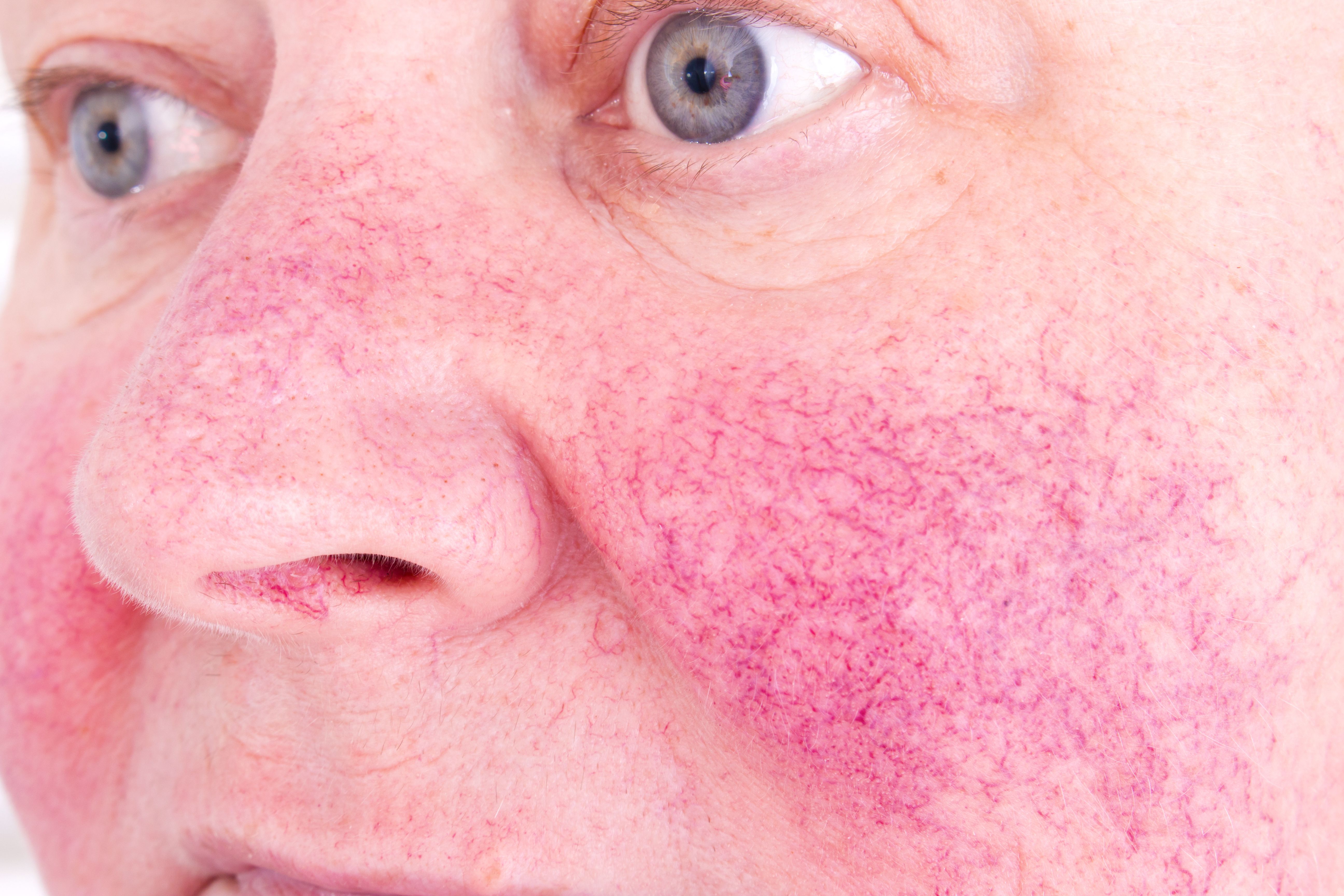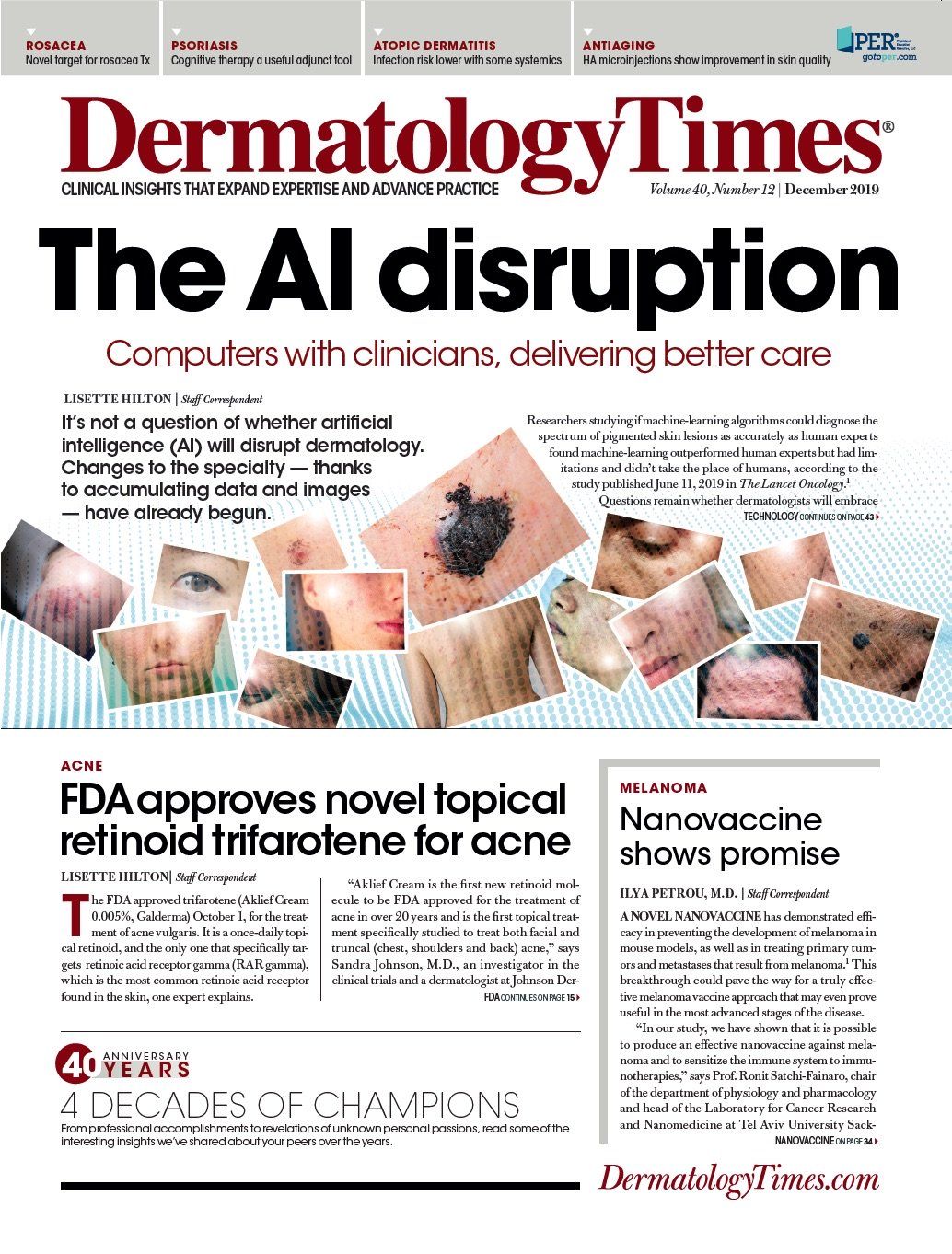- Acne
- Actinic Keratosis
- Aesthetics
- Alopecia
- Atopic Dermatitis
- Buy-and-Bill
- COVID-19
- Case-Based Roundtable
- Chronic Hand Eczema
- Drug Watch
- Eczema
- General Dermatology
- Hidradenitis Suppurativa
- Melasma
- NP and PA
- Pediatric Dermatology
- Pigmentary Disorders
- Practice Management
- Precision Medicine and Biologics
- Prurigo Nodularis
- Psoriasis
- Psoriatic Arthritis
- Rare Disease
- Rosacea
- Skin Cancer
- Vitiligo
- Wound Care
Publication
Article
Dermatology Times
A novel target for rosacea treatment
Author(s):
Evidence that points to interleukin-17 playing a role in the development and progression of rosacea also indicates research should investigate IL-17 inhibition as a therapeutic option for some patients, an expert says.
“Although available treatments for rosacea usually control symptoms in patients with mild-to-moderate disease, current options are not always effective, and there is a particular unmet need for better therapies to manage more severe disease,” says Ronald Vender, M.D. (Milan Lipowski - stock.adobe.com)

Evidence that points to interleukin-17 (IL-17) playing a role in the development and progression of rosacea also indicates research should investigate IL-17 inhibition as a therapeutic option for some patients, an expert says.
RELATED: IL-17 inhibitors may fill treatment gap in rosacea
“Although available treatments for rosacea usually control symptoms in patients with mild-to-moderate disease, current options are not always effective, and there is a particular unmet need for better therapies to manage more severe disease,” says Ronald Vender, M.D., associate clinical professor of dermatology, McMaster University, and founder and director, Dermatrials Research Inc, Hamilton, Ontario, Canada.
Dr. Vender and colleagues recently reviewed data supporting a role for IL-17 in the pathophysiology of rosacea, including a discussion of how existing treatments may act along the IL-17 pathway.1 He was incentivized to explore this topic after serving as an investigator in pivotal trials of IL-17 inhibitors for psoriasis.
LINKS BETWEEN IL-17 AND ROSACEA
IL-17 is a CD4+-derived pro-inflammatory cytokine that is produced by T helper (Th) 17 cells, but also by innate immune cells, including neutrophils. Acting through a variety of pathways, IL-17 stimulates the production of numerous inflammatory mediators, including cytokines, chemokines and other effectors.
“Analysis of the inflammatory infiltrate in all three subtypes of rosacea (erythematotelangiectatic, papulopustular and phymatous) has shown a Th1/Th17 dominance of the T-cell response along with increased levels of CD4+ cells and IL-17. Elevated levels of IL-17 have also been found in the tears of patients with ocular rosacea associated with Demodex infestation, and there is documentation through gene expression analysis that various inflammatory mediators induced by IL-17 or involved in its induction are increased in rosacea,” Dr. Vender says.
“Neutrophils are also thought to be important contributors to the inflammation seen in rosacea. Their presence may be explained, in part, by Demodex mites, which act as a chemotactic factor for neutrophils, and neutrophils release IL-17.”
READ MORE: New rosacea therapies show promise
IL-17 also stimulates production of cathelicidin, which is relevant to rosacea because cathelicidin is a chemotactic factor and has angiogenic properties. In addition, IL-17 induces expression of matrix metalloproteinase-9 (MMP-9) that is also implicated in the pathogenesis of rosacea.
MEDICATION MECHANISMS
A review of the cellular and molecular mechanisms underlying the anti-inflammatory effects of standard treatments for rosacea show that they all act on the IL-17 pathway by either inhibiting the production of downstream inflammatory mediators or inhibiting cytokines that promote differentiation of Th17 cells and, therefore, the production of IL-17, Dr. Vender says.
For example, metronidazole decreases Demodex counts and may directly and indirectly impair induction of IL-17 through its actions on other cytokines and chemokines. A relationship between ivermectin and IL-17 may include its antiparasitic action on Demodex, but ivermectin also decreases the production of cytokines that are induced by IL-17.
READ MORE: Global panel updates rosacea recommendations
Doxycycline blocks secretion of kallikrein and cytokines induced by IL-17 as well as the activity and production of MMP-9. Azelaic acid inhibits the UV-induced upregulation of inflammatory cytokines that are induced by IL-17. Cyclosporine, which is used topically in the treatment of ocular rosacea, also inhibits the production of IL-17 through suppression of Th17 cells.
CLINICAL TRIALS
Researchers at Stanford University undertook a proof of concept, open label phase 1b clinical trial investigating the use of secukinumab (Cosentyx, Novartis) in patients with moderate-to-severe papulopustular rosacea. This study is evaluating change in the number of papules/pustules from baseline to week 16 as its primary endpoint. Adverse events, along with changes in overall severity by global assessment, erythema, quality-of-life measures and immune infiltrate are being looked at as secondary outcomes. Results are forethcoming.
READ MORE: Oxymetazoline, pulsed dye laser show promise for rosacea
Dr. Vender notes that secukinumab, which is a recombinant human monoclonal IgGi/k antibody that binds to IL-17A, may be the best candidate to study for the treatment of rosacea because it was the first to market and has a longer history of use than brodalumab (Siliq, Valeant Pharmaceuticals) and ixekizumab (Taltz, Eli Lilly and Co.). Secukinumab may also have a safety advantage.
“Brodalumab has a broader spectrum of action as it blocks multiple IL-17 cytokines versus just IL-17A, but brodalumab carries a black box warning,” Dr. Vender says. “The high cost of IL-17 inhibitors currently prohibits their use in diseases other than for their approved indications in psoriasis and psoriatic arthritis. Data from clinical trials would be needed to justify expanding their use to rosacea,” he adds.Â
Disclosures:
Dr. Vender has received grants and/or research support from companies that market IL-17 inhibitors and treatments for rosacea. He received no financial support for the research, authorship or publication of his article on IL-17 and rosacea.
References:
Amir ali A, Vender R, Vender R. The Role of IL-17 in Papulopustular Rosacea and Future Directions. J Cutan Med Surg. 2019;:1203475419867611.





























